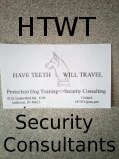
Sports
 |
USC |
On
The Wing Sports |
| <--- Previous Lesson |
Next Lesson ---> |
| Keep your gun and equipment
clean and well maintained. Be sure that the gun is safe to operate. Learn the mechanical and handling characteristics of the firearm you are using. Use Proper Ammunition. Carry only one gauge of ammo when hunting or shooting. Firearms should be unloaded when not actually in use. Storage so that firearms are not accessible to unauthorized persons Do not take a gun to a place where you cannot control access to the gun Assume That Any Gun, at Any Time, is Loaded. Protect your eyes and ears. The first step in cleaning a gun is to unload, check chamber(s) and magazines and remove ammo from the area. Never pass a "loaded" firearm to another person. Hold "unloaded" firearms with action open out to another person...when they have firmly grabbed hold and said thank-you, then let go your hold to let them have possession. A person receiving a gun from another person, must immediately double check the chamber and magazine to confirm that the gun is "unloaded". A person who owns a gun is responsible for confirming the qualifications of any person who handles the gun. Ownership is not the same thing as control. A person who possesses a gun or brings it to any particular location is also responsible for confirming the qualifications of any person who handles the gun. A person who is planning to acquire a gun should already have or be planning simultaneously a gun-safe installation and should be conducting simulation exercises in access control. A person who carries a gun must have the where-with-all and skills necessary to maintain control of the firearm. (Where-with-all including: Knowledge of your own shooting skills, knowledge of your own physical abilities and skills, Knowledge of the environments through which you will travel, determination to control, full decision making capability, & knowledge of your responsibility.) A person who possesses a gun who goes on medication or goes to sleep must have all firearms locked up or explicitly pass the control responsibility to a qualified person. *A person who is going to use alcohol or pain medicine or other mind numbing drug should lock up the guns first. *A person who may dream of conflicts when they sleep should lock up the guns first. *Ingested alcohol can be a depressant; anyone who uses much of this should have their guns locked in someone else's safe the combination to which you do not know. *Marijuana can make you paranoid; anyone who uses this should have their guns locked in someone else's safe the combination to which you do not know. *Any mind altering drug, or anti-depressant drug can cause hallucinations, feelings of invincibility, suicide. The persons making and dispensing some of this stuff don't even know what it does to you. If you must do this, first lock your guns in someone else's safe the combination to which you do not know. * This is our Firearm Handling Axiom #1. If the 'gun safety poster' on your wall does not have this as the top item, write it in! Ammunition should not be stored in the same place as the firearm storage. Firearms that are on display and unattended by the responsible person should be disassembled so as to be inoperable. Firearms that are in long term storage should be disassembled so as to be inoperable. Key parts that have been removed to make a gun inoperable (such as a firing pin) should not be stored in the same place as the gun. When selecting a gun, decisions regarding type of gun, size, type of action, quality, etc. can take time to research and much of this information will be conflicting. The best source of this information will be from someone you trust who has experience with the same needs and situations. Often this may be impossible to find. Advise flows freely from many ignorant persons in this field, and the salesman may have to put the hardest sales effort to the gun that nobody else would buy. By increasing your skill level, with much practice, and more and sooner practice, you will likely negate any error that you made in some of the gun selection choices, thus proving out the truth to the old adage: "The best gun in the world is the one in your hand." Does it fit you? What will you have to do to learn to use it effectively? Is it the right caliber, projectile(s) type? What will the storage and access issues be? How easy to load? How easy to unload? How dependable? How easy to maintain? What ammo? Is it concealable? What would the effect be if Brandished? Brandishing a firearm can have deadly consequences! Never brandish a firearm unless you fully intend to follow through with your threat if necessary. Swinging a long gun off of your shoulder strap into your hands can be construed as a threat. Pulling back a jacket to deliberately display a holstered handgun can be a threat. Don't mess around! Firearm Handling Axiom #1 Be careful includes deliberate behavior to make an intended impression on the people around you. Do not joke or horse-around with a firearm in your hand. Your intentions to everyone present when the firearm is in your hand should be clear. Do not shoot with or keep company with anyone handling a firearm who does not follow the Firearms Handling Axioms 123 A laboratory clean room is not the place to test a gun action's dependability unless you will only be shooting in a laboratory clean room. Seemingly slight variation in ammo can make a large difference in overall functionality. Test and practice with what you will be using. |
 |
Dummy Guns are used for early childhood training of the Firearms Handling Axioms, and for adult practice of access and control techniques. Nothing that is made to look like a firearm makes a good toy! A squirt water pistol makes a good tool for training a cat, for putting out flame flare-up at the barbeque grill, for training a child to not point a gun at people. A child's access to Dummy Guns needs supervision. Many kids have been shot and killed after pointing fake firearms at the wrong person. A child Brandishing something that looks like a firearm can cause car accidents on the highway, dangerous confrontations, false police reports, and panic. A child should not be left alone to decide where and how a dummy gun should be used. Dummy guns are excellent tools when used properly for both children and adults. The toy department at a store may be the easiest place to acquire your Dummy gun but best practice would be to retain as few features to the real thing as is necessary for the training at hand. It could be that a stick in the yard would do the job.  Light air powered BB guns are also good training tools. Learning to always be aware of where the muzzle is pointed can be learned the hard way when windows are busted; but the hard way is not how you want to learn the importance of eye protection with these bouncing round projectiles. Round shot from high powered shotguns can bounce and any bullet can ricochet when hitting metal or rock. Even the surface of water can cause a ricochet when the projectile hits at a low angle and a wave can complicate the prediction of this. Some persons have been confused thinking real guns were inoperable toys and these are often the same ignorant persons who do not adhere to the Firearms Handling Axioms. Children should be taught at an early age that anything that looks like ANY KIND of gun, both the real and the dummies should be reported to an adult immediately, and permission gained before touching! Maintain supervision of children when visiting any new place where occupants may not properly respect firearms handling and storage issues. Do not assume by a person's age that they are careful about firearms handling. Before handling a firearm for the first time, all persons should study the Firearms Handling Axioms. When a parent or responsible trainer has determined that the student has a thorough knowledge and understanding of these Axioms, the student will be ready to learn how to open the action and check to see that it is unloaded, of the particular firearm type that they will handle. The student needs to know how this will be accomplished also before handling the firearm. A plan including instruction on how the gun functions and a plan for where that muzzle is going to be pointed! For the instruction consult an owner's manual or an experienced trainer. If you go to Internet, check for info from the gun's manufacture first. If you have time to wait on us, send an email to us@usc.training we may be able to help. When it is time for hands-on, the first thing you will do is open that action and check the chamber(s). Latch the action open when possible to maintain view of the chamber. And check the magazine. Learning how to Unload is also the very important early lesson. Some people call this learning to "Make the gun safe." but this is bad choice of wording in my opinion. A gun is a tool that can not be safe or unsafe. The all important lessons and training are to reduce risks and persons who handle firearms should understand this. If a parent wants to give a dummy gun to a child, give instruction with it, and don't tell them is was from Santa Clause. Risk Management may be a better term, and this is exactly what we do in security and self-defense. But even this term is misleading in the Hunting and Shooting Sports as it implies questions with trade-off propositions of which there are very few in the game. The first and foremost valuable result of any Hunt is to practice good firearms handling. A trophy, a high score, meat is the gravy. So when you are hunting in a field and come to a fence which you must cross, the only question about unloading the gun before climbing or crawling versus travel speed may be can I do it faster than last time, but is certainly not whether to unload first. You unload your gun before climbing a tree, you unload your gun before taking a wide step across a ditch. It is not a question of how wide, or how slippery the slopes. What are you out here for - unloading. Unloading is an important early lesson. With your Dummy Rounds you can practice unloading with your eyes closed, unloading in the dark, unloading while standing, unloading while laying down. Getting just one gun and learning how to shoot it before you acquire another for the other hand or another purpose is probably good advise. But you can't go wrong learning how to unload any gun! Be wary of persons who say that they are "afraid of guns" as they may not know how to unload one. Trap shooting is a sport where players will often talk about the decisions that they have made in selecting guns. If you join this game with the less than optimum barrel length, less than optimum choke, less than optimum gun fit, less than optimum gauge, less than optimum shot size, don't be disappointed if you are not making as many hits right out the gate as the experienced shooters. You can still have fun and these choices are often easy to change. Premium equipment or not, when you are getting plenty of practice with consistent equipment is when the high scores will start coming. |
 |
| <--- Previous Lesson |
Next Lesson ---> |